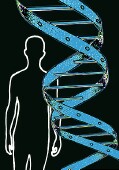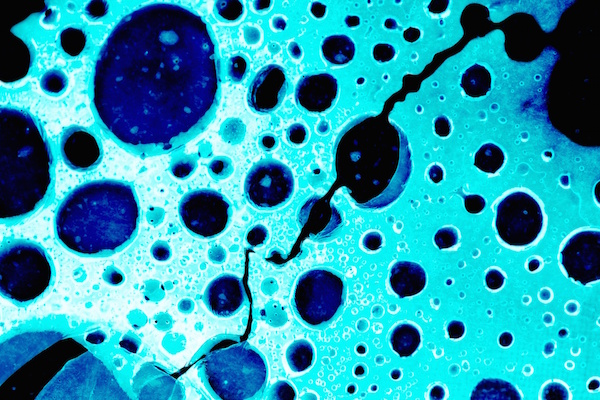
TUESDAY, March 13 (HealthDay News) — A newly discovered genetic mutation is more common in teens and young adults than infants with a nerve tissue cancer called neuroblastoma.
The gene with the defect is called ATRX. While this defect was found in many teens and young adults with neuroblastoma, none of the infants with the disease who were tested had this genetic defect. This is important because babies are the ones who most commonly develop neuroblastoma. And, in babies, the disease tends to take a much less aggressive course.
“In infants, neuroblastoma is often treatable. In older patients, it tends to be more clinically aggressive,” said study co-author Dr. Alberto Pappo, director of the solid tumor division at St. Jude Children’s Research Hospital in Memphis, Tenn.
“About 90 percent of neuroblastomas happen in children less than 10 years old. When it happens in teens and young adults, they usually tend to have poorer clinical outcomes. They relapse over and over again. They can survive for many years with the disease, but they ultimately die of the disease,” Pappo noted.
The discovery of the mutation in the ATRX gene is an “exciting, but preliminary finding. We still need to try to determine if this mutation is associated with any significant differences in survival,” added Pappo.
Results of the study are published in the March 14 issue of the Journal of the American Medical Association.
Overall survival rates for neuroblastoma are 88 percent for babies under 18 months at the time of diagnosis, 49 percent in children between 18 months and 12 years and just 10 percent in teens and young adults who are diagnosed with the disease, according to background information in the study.
Because the disease takes such a different course depending on a patient’s age, researchers have long suspected that there are likely different subsets of neuroblastoma, and that different genetic mutations may account for the differences in prognosis by age.
To see if there were any identifiable differences, the researchers conducted what’s known as whole genome analysis on tumor samples from 40 infants, children, teens and young adults with advanced neuroblastoma. The researchers then looked to see if there were any similarities.
The investigators found that mutations in the ATRX gene were present in 100 percent of teens and young adults. Just 17 percent of children under age 12 had this same mutation, and none of the infants tested had it.
To confirm these findings, the researchers tested tumor samples from an additional 64 people who had advanced neuroblastoma and found that the ATRX mutation was identified in 33 percent of adolescents and young adults and 16 percent of the children under age 12. Again, no evidence of this mutation was found in infants with the disease.
When the two groups were combined, the ATRX mutation was present in 44 percent of teens and young adults and 17 percent of children.
Pappo said this finding will likely spur more research, and could potentially be used to develop a screening test to determine who might have more (or less) aggressive cancer. And, eventually, there’s a possibility that by reprogramming the ATRX gene, doctors could alter the cancer cells. But, he cautioned that the study’s findings are preliminary and any practical uses are a long way off.
Commenting on the study, Marc Symons, an investigator at the Center for Oncology and Cell Biology at the Feinstein Institute for Medical Research in Manhasset, N.Y., noted that “most cancers are not thought of as being a single disease, and it’s important to characterize the subclasses.”
And, Symons added, “This is a preliminary study that highlights their discovery of the ATRX mutation in a specific population. It opens the way to potential new therapeutic targets,” explained Symons, but fixing this type of genetic mutation is very challenging, he explained.
Dr. Rosanna Ricafort, director of the pediatric stem cell transplant program in the division of pediatric hematology/oncology at the Children’s Hospital at Montefiore in New York City, agreed that the findings are preliminary. “This is an interesting study, but more and larger studies need to be done before we’ll have the ability to translate what’s been learned into improving diagnosis and directing therapies.”
The most important factor, she said, is knowing whether people who have this mutation have more or less aggressive cancer. “This study has identified the mutation, but doesn’t correlate it with outcome. It’s a good first step in our understanding of the disease, but we need to understand the long- and short-term outcomes in people with this mutation,” she added.
This isn’t the first study to link genetic similarities in neuroblastomas. Another study, reported in 2009 in the journal Nature, compared the genes of people with and without neuroblastomas and found that a specific “copy number variation” — a kind of genetic trait — doubles the risk of a child developing the disease.
More information
Learn more about neuroblastoma from the U.S. National Cancer Institute.

